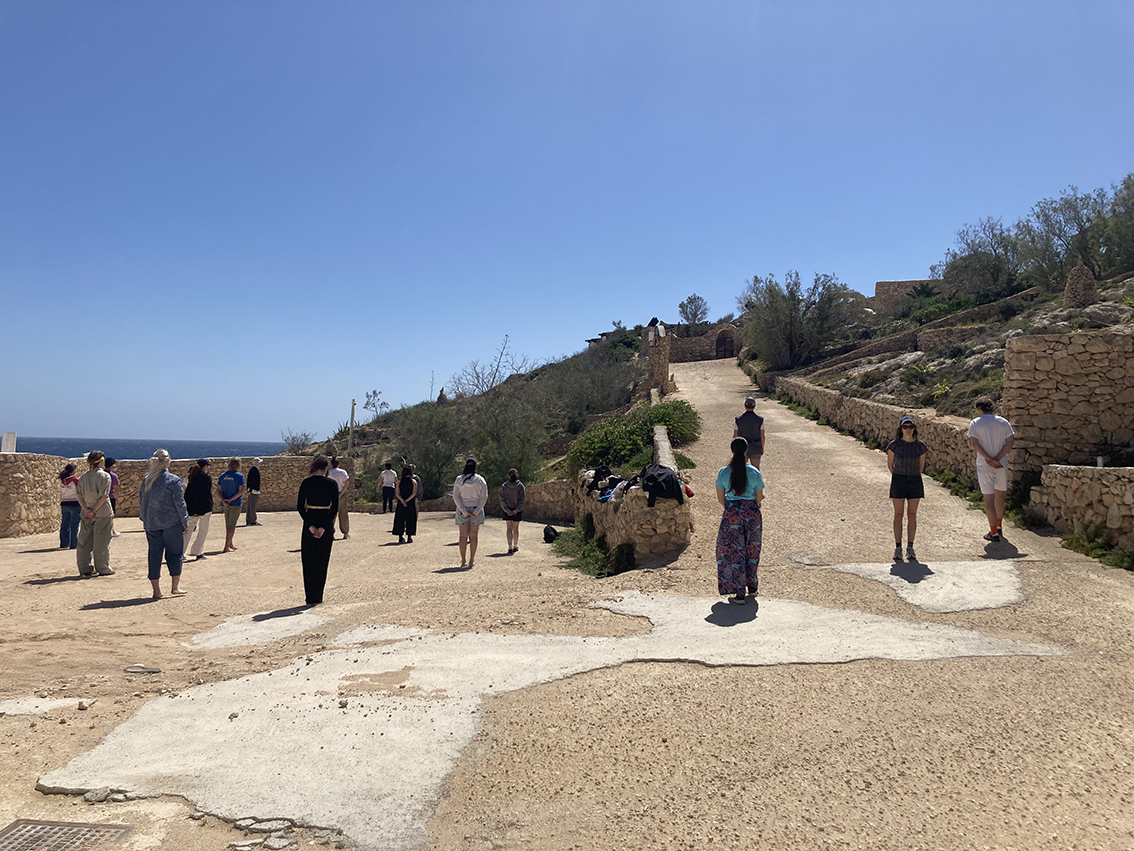Walking Meditation
Download the methods
To download the methods, click here
Target group
No. of pax
Environment
Time needed
Materials
none
Objective/aim
The aim of the practice is to arrive in the present, as a meditative state, that helps you cope with difficult feelings and situations. It enables you to distinguish inner processes from outer processes. Arriving in your body, guided by breath.
We found this approach helpful when dealing with distressing and challenging topics such as the climate crisis and migration.
Step by step instructions
Step 1
Form a circle, warm up your body, do whatever you feel like doing, stretching, shaking etc. Take one or two songs/or five to ten minutes to explore your needs. You explain the exercise in a circle; the room should already be empty. Set a timer for 5-7 minutes (beginners) to 15 minutes (advanced). Make sure that your body is relaxed, you stand on both legs, have soft knees and jaw, and your breath is carrying you through the practice. Take some deep breaths together. Before starting, guide the group again through the aim of the practice: to arrive in your body, see thoughts coming and going, while focusing more and more on your steps.
Step 2
People come to stand in line. Make sure everyone has enough space around them. Hold your hands behind your back or in front of your body, and do not change this position further. Let your gaze be soft, looking to the front but without focusing on anything in particular.
Step 3
Now concentrate on thinking “standing, standing, standing” then think and say to yourself „right foot in front“, „left in front“ – formulate this thought for yourself in your mother tongue. Then step in front while thinking about it. „Right in front, left in front, right in front…“
Step 4
If a thought crosses your mind while stepping in front, in your mind say „stop, stop, stop“, stop the movement and stand on both legs again. Then name the thought three times that crossed your mind, like e.g.. „future, future, future” or present, past, anger, lust, pain, etc.
Step 5
Then say to yourself, „standing, standing, standing“ and start walking again. „Right in front, left in front“, like in Step 3. This procedure is continuously repeated. Be true to yourself and your thoughts and concentrate on your practice (not on others).
Step 6
When you reach the end of the line, say to yourself „change, change, change“ while turning around over your right shoulder and start again „, Right in front, left in front …..“
Step 7
When you hear the timer ring, stop where you are and take a deep breath in.
After this activity, you can either do creative writing as an outlet for what came up, or give the participants a break and talk about the experiences in small groups or one-on-one.
All experiences and feelings are welcome; there is no right or wrong. Remember the aim, to arrive in the here and now, your body and breath, and to differentiate between yourself and your thoughts.
Tips for the trainer
If you choose to work with this form of meditation, it is recommended to practise it daily, to really dive into it and get used to the form. Choose the length of the meditation wisely, not too long, but also not too short; 7 minutes is recommended.
Alternative
This meditation can also be done by yourself. A softer alternative would be to walk and, while walking, let flowers grow underneath your feet- for every step you take, a flower is growing underneath your step. You can also take a walk in nature and wander around, thus breaking the line.
Comment
Source
Christina Rauchbauer learned this method from Minako Seki (Butoh artist, Germany/Japan). The meditation is part of a form of Vipassana meditation.


